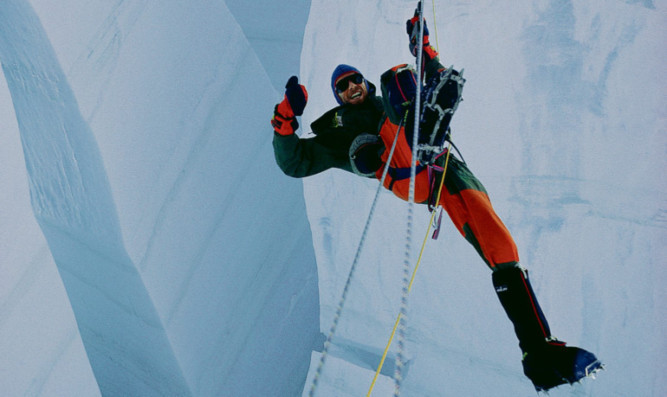As they pioneered a new ascent of the world’s greatest mountain, renowned adventurer Stephen Venables and his team felt on top of the world.
Accompanied by three fellow climbers, the Englishman successfully mastered Everest’s East (Kangshung) Face, reaching the summit alone and without supplementary oxygen.
He became the first Briton to do so and he and his small American/Canadian team were in understandably high spirits as they began their descent in 1988.
No one can let their guard down on the world’s highest mountain, with its summit (8,850 metres or 29,035 feet) rising high inside the “death zone”, where the temperature rarely breaks minus 30c and the air pressure is just a third of that at sea level.
From the disappearance of Mallory and Irvine in 1924 to the 1996 disaster, when 12 people died on one day, it has proved a formidable challenge to even the most experienced mountaineers.
And Venables was soon writing his own extraordinary chapter in the Everest story as he attempted to descend back to colleagues who had been beaten by exhaustion.
Reaching the summit late in the day, he was caught out by darkness on that descent and was forced to endure a record night without tent or sleeping bag at 28,000ft.
His climb already considered one of the supreme athletic tests known to man, with the the ever-present threat of avalanches and altitude sickness soon became a test of the very limits of human survival as he bravely decided to bivouac in the open.
He will recount that adventure and explore the history of Everest and those who have attempted to climb it at Pitlochry Festival Theatre next month.
Born in 1954, Venables grew up in the Surrey-Sussex borders and developed a keen early interest in the outdoors, and showed a preference for sea cliffs over beaches on trips to the coast.
His first real mountain experiences came on family holidays to North Wales and the Alps and, after a day’s rock climbing course at the age of 13, he was hooked on high-adrenaline outdoor pursuits.
Just five years later, he would make his first alpine ascent in the Dauphin of southeastern France.
The next 40 years have taken him all over the world, from the Himalayas in Asia, to the European Alps, the South American Andes, the mountains of east and southern Africa and the sub-Antarctic island of South Georgia.
Along the way he has made daring ascents of mountains previously unknown to the climbing community in countries such as Afghanistan and Tibet.
He has gone on to become a celebrated public speaker and writer of 11 books, many of them award-winning.
In 2007 he published his long-awaited autobiography, Higher than the Eagle Soars A Path to Everest, which tells the story of his early adventures.
His latest work, First Ascent, tells the history of world mountaineering, using first-hand accounts and archival photographs to recreate the real-life adventures.
Venables will bring The Everest Story to Pitlochry Festival Theatre on Friday March 22.
To book tickets, call the theatre box office on 01796 484626.
